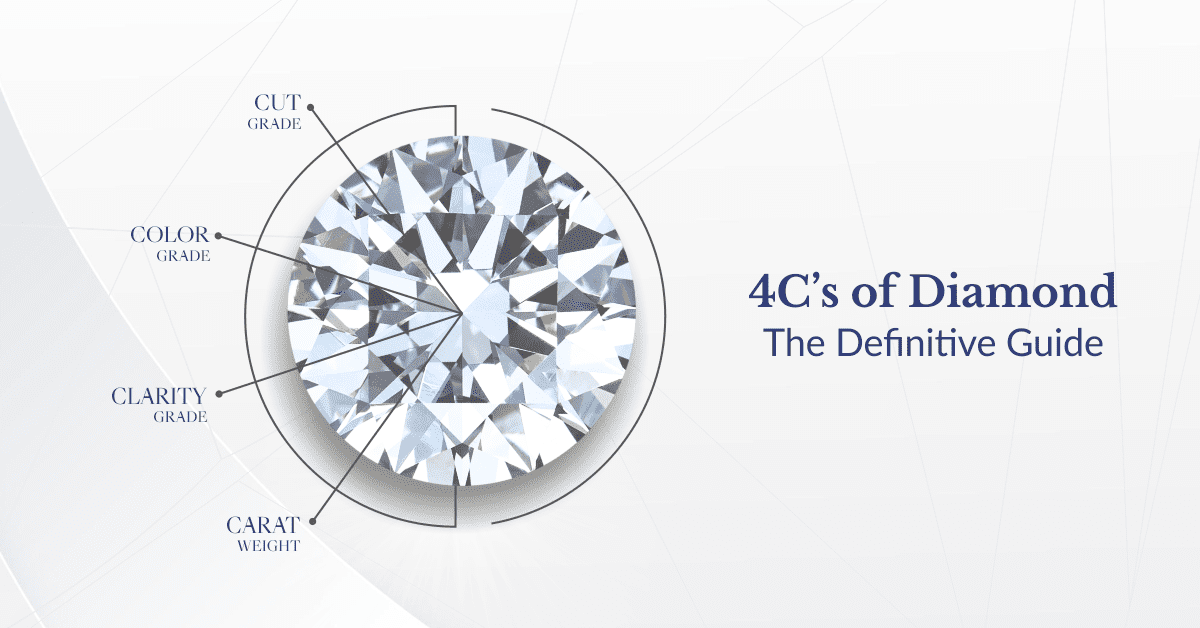While buying a diamond, the diamond 4Cs chart is a fundamental instrument to assist you with pursuing an informed choice. The 4Cs — Cut, Color, Clearness, and Carat weight — are the four key factors that decide a diamond’s quality and worth. By understanding the diamond 4Cs chart, you can more readily assess your choices and select a diamond that meets your inclinations and spending plan. This guide will walk you through every element of the diamond 4Cs chart to assist you with pursuing the best decision.
Table of Contents
Cut: The Most Important of the 4Cs
The diamond 4Cs chart starts with Cut, which is seemingly the most vital factor in deciding a diamond’s splendor. The slice alludes to how well a diamond has been molded and faceted, influencing how light reflects and refracts inside the stone. A very much cut diamond will show uncommon shimmer and fire, while a poorly cut diamond might seem dull. The diamond 4Cs chart categorizes cuts into different grades, including Incredible, Awesome, Great, Fair, and Poor. While assessing the diamond 4Cs chart, prioritize the slice grade to guarantee you pick a diamond with ideal splendor and visual allure.
Color: Assessing the Diamond’s Tone
Color is another basic part of the diamond 4Cs chart. Diamonds are evaluated on a scale from D to Z, with D addressing the most colorless and Z showing the presence of perceptible color. The less color a diamond has, the higher its worth inside the diamond 4Cs chart. For most diamonds, a color grade of G-H offers a decent equilibrium between worth and appearance, with close colorless stones that give a splendid look without a critical cost increment. While consulting the diamond 4Cs chart, select a color grade that complements your inclinations and guarantees the diamond’s splendor stays unaffected.
Lucidity: Surveying the Diamond’s Virtue
Lucidity is another fundamental element of the diamond 4Cs chart, alluding to the presence of inner or outside defects, known as incorporations and flaws. The lucidity grade goes from Impeccable (no considerations or flaws apparent under 10x amplification) to Included (incorporations and/or imperfections noticeable to the unaided eye). The diamond 4Cs chart gives different clearness grades, including VVS1, VVS2, VS1, VS2, SI1, SI2, and I1. Higher clearness grades demonstrate less apparent blemishes, upgrading the diamond’s general appearance. While utilizing the diamond 4Cs chart, hold back nothing grade that offsets perceivability of imperfections with your spending plan.
Carat Weight: Estimating the Diamond’s Size
Carat weight is the last part of the diamond 4Cs chart and addresses the size of the diamond. One carat rises to 0.2 grams, and diamonds are often estimated to the 100th of a carat. Bigger lab made diamonds are more extraordinary and commonly more important, however the cost increments dramatically with size. The diamond 4Cs chart permits you to look at carat loads and understand what size means for the diamond’s general worth. While choosing a diamond, consider the carat weight that accommodates your financial plan and inclination while guaranteeing that the other three Cs — Cut, Color, and Lucidity — are likewise in accordance with your ideal quality.
What the 4Cs Chart Means for Diamond Valuing
The diamond 4Cs chart is critical in deciding the cost of a diamond, as every one of the 4Cs adds to the general worth. By and large, diamonds with higher grades in Cut, Color, Lucidity, and Carat weight will command more exorbitant costs. Understanding the diamond 4Cs chart assists you with exploring these factors and make a very much informed buy. For example, a diamond with a Great cut and high lucidity might be more costly than a bigger stone with a lower cut grade. By adjusting the four Cs according to your inclinations and financial plan, you can track down a diamond that offers both quality and worth.
Utilizing the 4Cs Chart to Pick the Ideal Diamond
While choosing a diamond, utilizing the diamond 4Cs chart can direct you in picking a stone that meets your particular standards. Start by prioritizing the Cut, as it influences the diamond’s radiance and generally appearance. Then, assess the Color to guarantee it lines up with your inclinations for tint and straightforwardness. Consider Lucidity to decide the perceivability of any blemishes, and at last, pick a Carat weight that suits your financial plan and wanted size. The diamond 4Cs chart gives a complete framework to evaluating diamonds, guaranteeing you pursue a decision that adjusts quality, esthetics, and worth.
Conclusion
In conclusion, the diamond 4Cs chart is an important asset for anybody hoping to buy a diamond. By understanding Cut, Color, Lucidity, and Carat weight, you can go with an informed choice and select a diamond that impeccably suits your necessities. Whether you are picking an engagement ring, a gift, or a piece of fine gems, the diamond 4Cs chart will assist you with assessing your choices and track down a diamond that consolidates magnificence, quality, and worth. Make sure to utilize the diamond 4Cs chart as a manual for guarantee you pursue the best decision for your own inclinations and spending plan.

